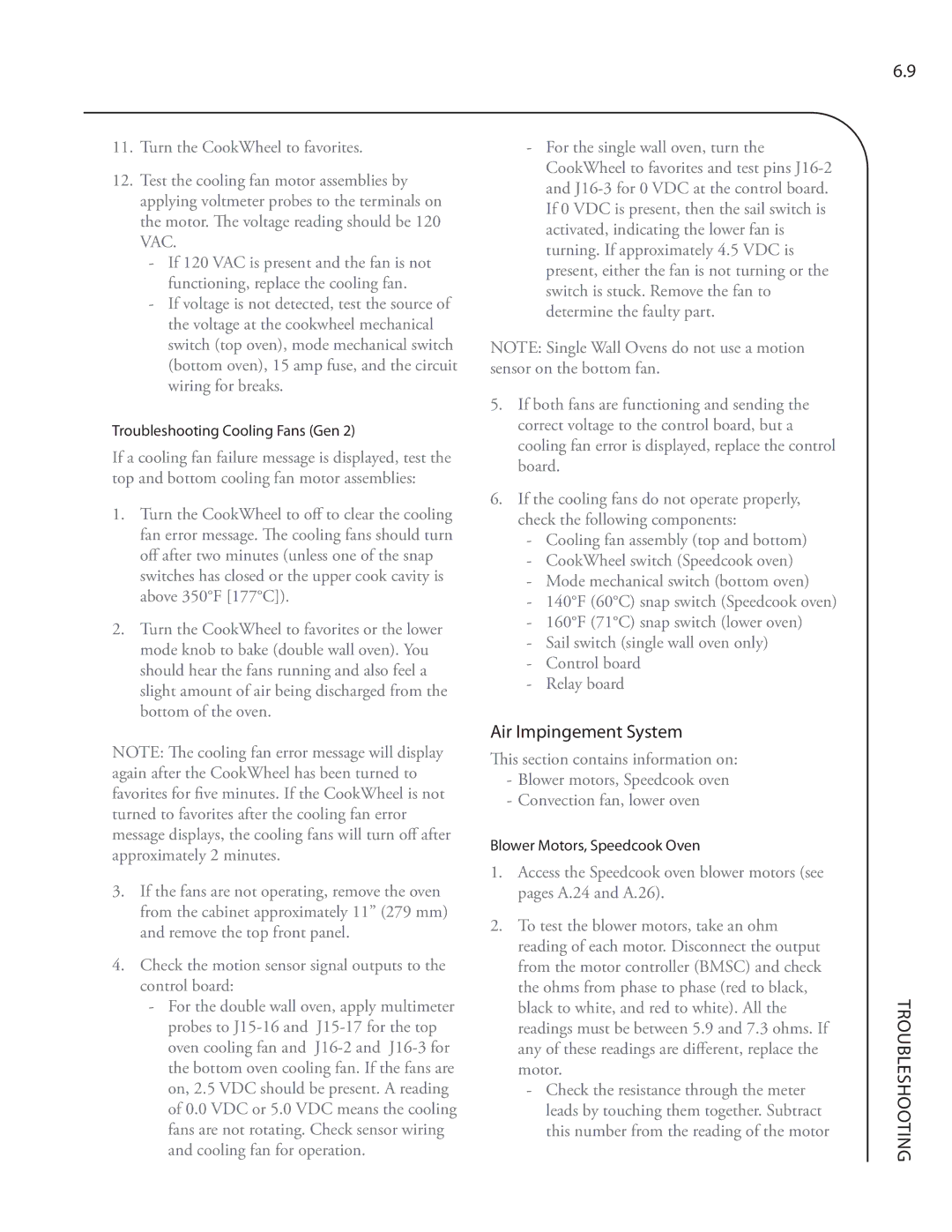
11.Turn the CookWheel to favorites.
12.Test the cooling fan motor assemblies by applying voltmeter probes to the terminals on the motor. The voltage reading should be 120 VAC.
-If 120 VAC is present and the fan is not functioning, replace the cooling fan.
-If voltage is not detected, test the source of the voltage at the cookwheel mechanical switch (top oven), mode mechanical switch (bottom oven), 15 amp fuse, and the circuit wiring for breaks.
Troubleshooting Cooling Fans (Gen 2)
If a cooling fan failure message is displayed, test the top and bottom cooling fan motor assemblies:
1.Turn the CookWheel to off to clear the cooling fan error message. The cooling fans should turn off after two minutes (unless one of the snap switches has closed or the upper cook cavity is above 350°F [177°C]).
2.Turn the CookWheel to favorites or the lower mode knob to bake (double wall oven). You should hear the fans running and also feel a slight amount of air being discharged from the bottom of the oven.
NOTE: The cooling fan error message will display again after the CookWheel has been turned to favorites for five minutes. If the CookWheel is not turned to favorites after the cooling fan error message displays, the cooling fans will turn off after approximately 2 minutes.
3.If the fans are not operating, remove the oven from the cabinet approximately 11” (279 mm) and remove the top front panel.
4.Check the motion sensor signal outputs to the control board:
-For the double wall oven, apply multimeter probes to
-For the single wall oven, turn the CookWheel to favorites and test pins
NOTE: Single Wall Ovens do not use a motion sensor on the bottom fan.
5.If both fans are functioning and sending the correct voltage to the control board, but a cooling fan error is displayed, replace the control board.
6.If the cooling fans do not operate properly, check the following components:
-Cooling fan assembly (top and bottom)
-CookWheel switch (Speedcook oven)
-Mode mechanical switch (bottom oven)
-140°F (60°C) snap switch (Speedcook oven)
-160°F (71°C) snap switch (lower oven)
-Sail switch (single wall oven only)
-Control board
-Relay board
Air Impingement System
This section contains information on:
-Blower motors, Speedcook oven
-Convection fan, lower oven
Blower Motors, Speedcook Oven
1.Access the Speedcook oven blower motors (see pages A.24 and A.26).
2.To test the blower motors, take an ohm reading of each motor. Disconnect the output from the motor controller (BMSC) and check the ohms from phase to phase (red to black, black to white, and red to white). All the readings must be between 5.9 and 7.3 ohms. If any of these readings are different, replace the motor.
-Check the resistance through the meter leads by touching them together. Subtract this number from the reading of the motor
6.9
TROUBLESHOOTING
